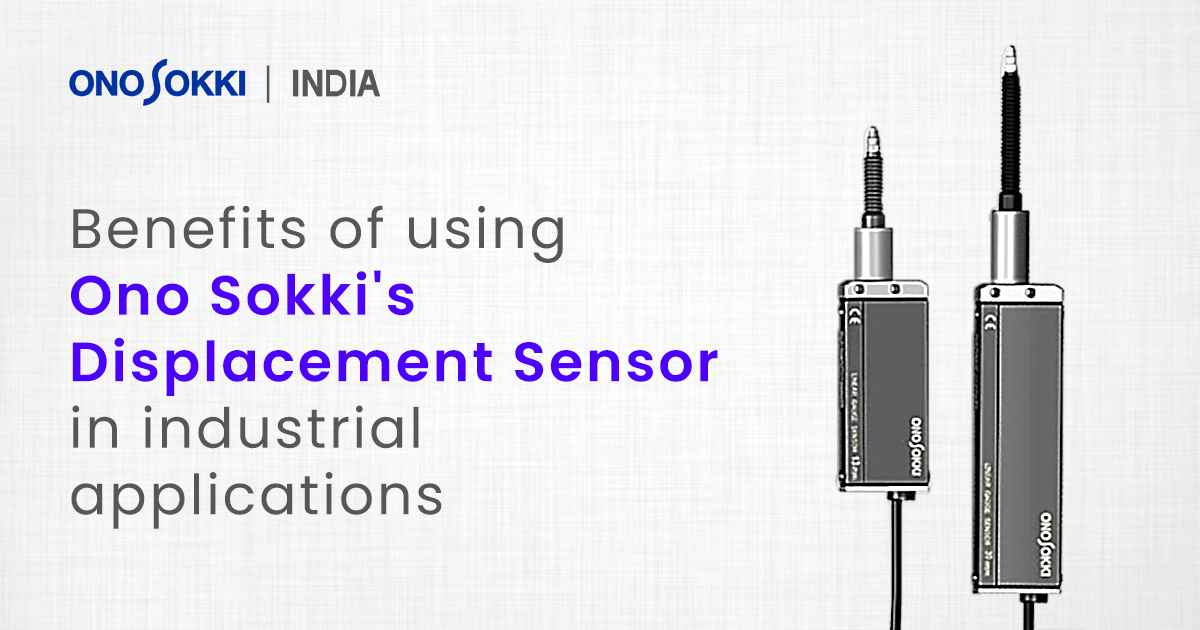Displacement sensors play a crucial role in various industrial applications where precise measurement of linear or angular displacements is required. Displacement sensor are used for quality control and inspection purposes in industries such as automotive, electronics, aerospace, and manufacturing. They can measure dimensional variations, part tolerances, and surface profiles to ensure that products meet specified standards. Sensors are employed in position control systems to provide accurate feedback on the position of moving parts or objects.
This is vital in applications such as robotics, CNC machines, automated assembly lines, and material handling systems. Displacement sensors are utilized to align components or machinery accurately. They can measure deviations from a reference position and provide real-time feedback for adjustment and alignment tasks, ensuring precise positioning and alignment of equipment.
Displacement Sensor Applications
- Manufacturing and automation
- Automotive Industry
- Aerospace and aviation
- Civil Engineering and Construction
- Electronics and Semiconductor Manufacturing
- Medical Devices and Biomechanics
What are the features of a displacement sensor?
- Measurement Range: Displacement sensors are available in different measurement ranges, allowing them to measure small-scale or large-scale displacements based on the application requirements.
- Accuracy and Resolution: The accuracy of a displacement sensor refers to how closely it measures the true displacement value, while resolution refers to the smallest change in displacement that the sensor can detect.
- Non-contact Measurement: Many displacement sensors utilize non-contact measurement techniques, such as optical or capacitive sensing, which do not require physical contact with the object being measured.
- Sensing Principle: Displacement sensors employ various sensing principles, such as capacitive, inductive, optical, or magneto strictive, depending on the specific application requirements.
- Output Signal: Displacement sensors can provide different types of output signals, including analog voltage, analog current, digital, or frequency signals.
- Environmental Robustness: Displacement sensors designed for industrial applications often feature robust construction and protection against harsh environmental conditions, such as temperature extremes, vibration, moisture, or dust.
Types of displacement sensors
- Potentiometric Sensors: These sensors use a resistive element and a sliding contact to measure displacement. The change in resistance as the contact moves along the resistive element provides a voltage output proportional to the displacement.
- Capacitive Sensors: Capacitive sensors measure displacement by detecting changes in capacitance between two or more electrodes. The displacement alters the gap between the electrodes, resulting in a change in capacitance, which is converted into a displacement measurement.
- Inductive Sensors: Inductive sensors utilize the principle of electromagnetic induction to measure displacement. A coil generates an electromagnetic field, and the movement of a metallic target induces changes in the field, which are detected and converted into displacement values.
- Optical Sensors: Optical sensors employ light beams and detectors to measure displacement. They can use different techniques, such as triangulation, interferometry, or laser-based methods, to determine the position or displacement of an object.
- Hall Effect Sensors: Hall effect sensors measure displacement based on the Hall effect, which is the generation of a voltage when a magnetic field is applied perpendicular to the current flow in a conductor. The displacement alters the magnetic field, resulting in a change in the Hall voltage and providing a displacement measurement.
- Eddy Current Sensors: Eddy current sensors use the principle of electromagnetic induction to measure displacement. A coil carrying an alternating current generates eddy currents in a conductive target, and the displacement alters the interaction between the coil and target, which is detected and converted into displacement values.
- Linear Variable Differential Transformers (LVDT): LVDT sensors are widely used for linear displacement measurement. They consist of a primary coil and two secondary coils wound on a cylindrical core. The displacement changes the coupling between the primary and secondary coils, producing differential voltages that indicate the displacement.
What are the three main components of a sensor?
- Sensing Element: The sensing element is part of the displacement sensor that interacts with the object or target being measured. It detects the displacement and converts it into a measurable signal. The sensing element varies depending on the type of displacement sensor. For example, in an optical displacement sensor, the sensing element may consist of a light source, optics, and a detector. In a capacitive displacement sensor, the sensing element includes electrodes or capacitive plates.
- Signal Processing Unit: The signal processing unit receives the signal from the sensing element and processes it to provide a meaningful measurement or output. This unit may include amplifiers, filters, analog-to-digital converters (ADCs), and other circuitry that condition and convert the raw signal into a usable form. The signal processing unit may also incorporate calibration and compensation techniques to enhance the accuracy and stability of the measurement.
- Output Interface: The output interface is responsible for delivering the measurement output to the user or the control system. This interface can be in the form of analog signals (voltage or current), digital signals, or other types of outputs, depending on the sensor and application requirements. The output interface may include connectors, terminals, or communication interfaces (such as serial communication or Ethernet) to connect the displacement sensor to the external system.
What is the working principle of displacement sensors?
- Potentiometric Sensors: Potentiometric sensors use a resistive element and a sliding contact. The displacement of the sliding contact along the resistive element changes the resistance, which is converted into a voltage output proportional to the displacement.
- Capacitive Sensors: Capacitive sensors measure displacement by detecting changes in capacitance. The sensor consists of two or more electrodes, and the displacement alters the gap between them, resulting in a change in capacitance. This change is then converted into a displacement measurement.
- Inductive Sensors: Inductive sensors utilize electromagnetic induction. The sensor includes a coil that generates an electromagnetic field, and the movement of a metallic target induces changes in the field. These changes are detected and converted into displacement values.
- Optical Sensors: Optical sensors use light beams and detectors to measure displacement. They can employ different techniques such as triangulation, interferometry, or laser-based methods. The displacement alters the position of the reflected or diffracted light, allowing measurement of the displacement.
Culmination
Ono Sokki’s displacement sensors offer several significant benefits for industrial applications. Their high accuracy and resolution ensure precise and reliable displacement measurements, contributing to improved quality control and inspection processes. The non-contact measurement capability minimizes the risk of damage, interference, and wear, enhancing the longevity of the sensor and the equipment being measured. The wide range of linear gauge sensor measurement options provided by Ono Sokki’s displacement sensors makes them suitable for diverse industrial applications, from automotive and aerospace to electronics and manufacturing. They can effectively monitor and control position, alignment, vibration, load, and force, enabling optimal performance and operational efficiency.



